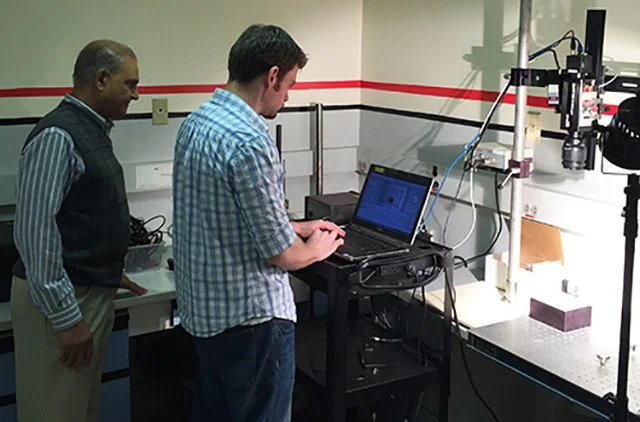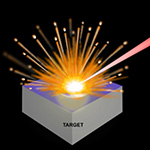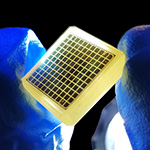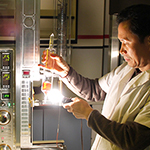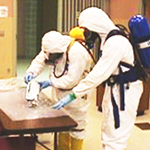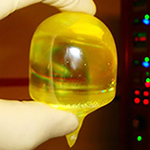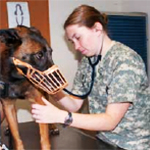The author (left), together with Brimrose Director of R&D Sudhir Trivedi (second from left), Brimrose Founder and CEO Ron Rosemeier (in brown sweater) and Colonel Alan Samuels discuss a next big idea at Brimrose headquarters.
I have worked at some great places in my lengthy career in optics and photonics, but none for as long as at the Brimrose Corporation of America.
What makes Brimrose such a special place to work?
To start with, the founder, Ron Rosemeier, who is still CEO, was greatly influenced by Prof. Robert Green at Johns Hopkins University. Prof. Green believed that if you gave the right people the right tools, you could accomplish anything. I go to work every day believing that an idea I have may not only change how Brimrose operates, but also how the world operates. The power to potentially make the world a better place is a great motivator!
Brimrose is set up to foster great ideas. Every idea is valued. Innovation is critical to the company’s success. It is a congenial atmosphere, where PhDs, techs, marketing people, scientists, engineers, software people, accountants, fulfillment people and executives fully interact every day. There are no hard lines of separation.
This is important to me. As a long-time science writer and business innovator, I need to talk to people who make the science work, who can explain how it works, and who can provide an idea as to where it is going.
There is a lot of on-the-job training at Brimrose, which the company is happy to provide as part of the Brimrose experience. As the faster, massless photon replaces the slower, bulkier electron in just about every facet of our technology lives, this training is priceless. You are being set up with skills that will put in good stead for many years to come.
How far can your idea go at Brimrose? One of our spectrometers is going to the Moon to help NASA in the search for water. Working with Johns Hopkins, technology developed by one of our scientists is destined to reduce infant mortality. We have many similar stories.
Every associate is valued here, and Dr. Rosemeier has established a stable work environment. Despite the economic ups and downs that every company goes through, Brimrose has not had a layoff in its 40+ year history. Dr. Rosemeier has changed lives for the better. He has brought people from all over the world to Brimrose, and to a new life in the United States.
There is a lot of flexibility at Brimrose. The company wants you to find the place where you are most happy and productive. We are constantly pushing the envelope. As a technology-based company, we have to be forward thinkers, imagining how we can make the world a better place through our technology.
There is a very real feeling of community here, exemplified by our Christmas party and bonuses, as well as corporate-wide announcements when someone has done something of merit. Dr. Rosemeier also rewards successful business ideas financially. It is a very encouraging environment.
If Brimrose sounds like the kind of place you would like to work, contact Vlad Stanislavsky or myself at 410-472-7070. We would love to talk to you about becoming part of the Brimrose team.



